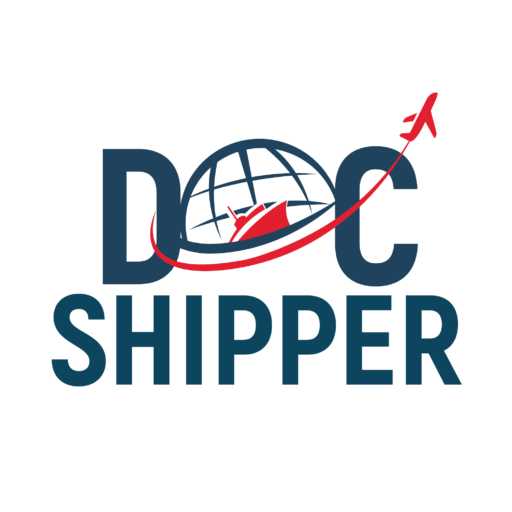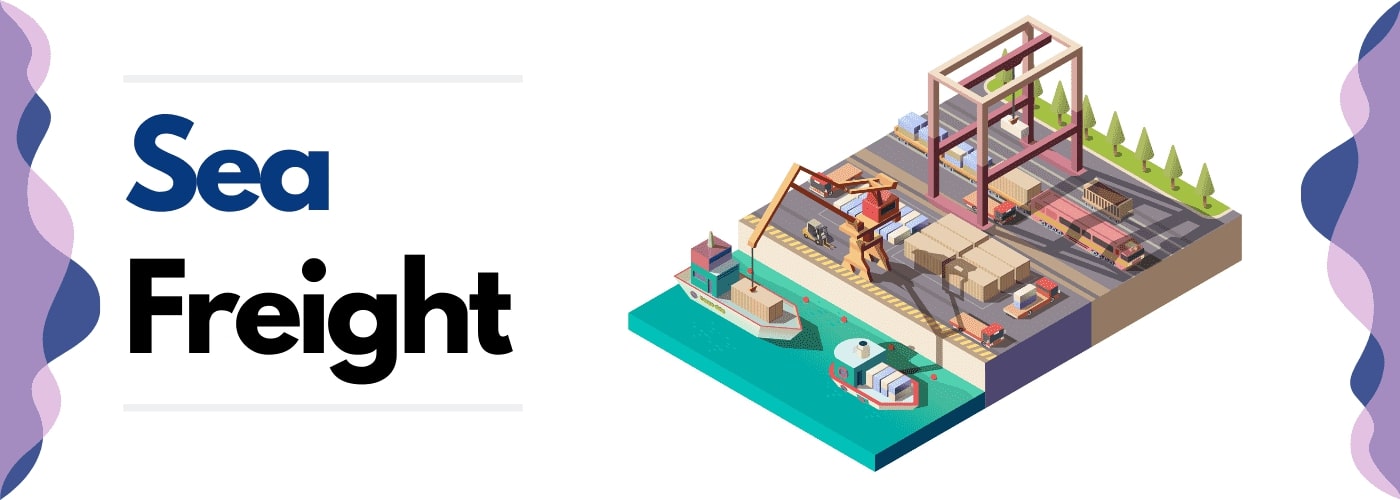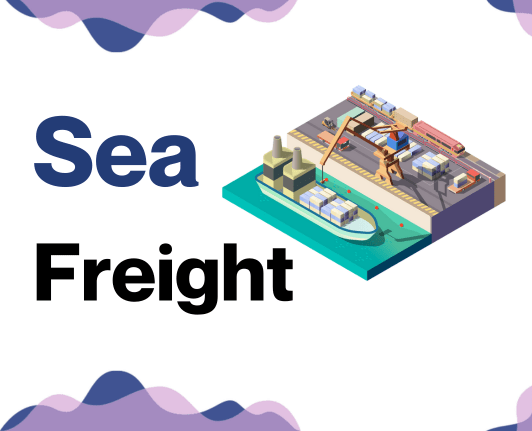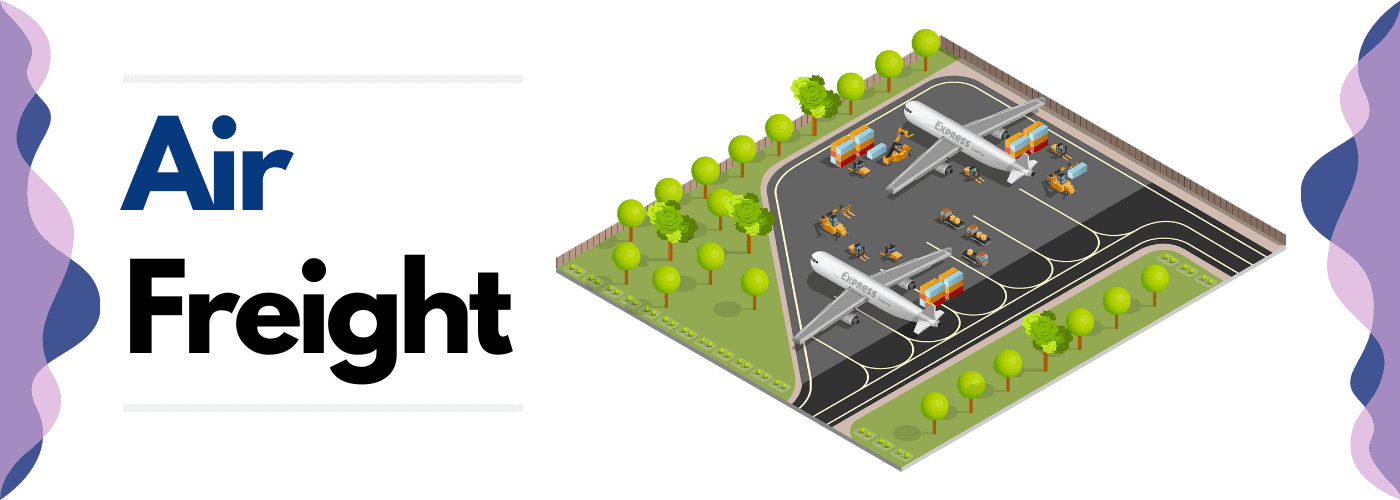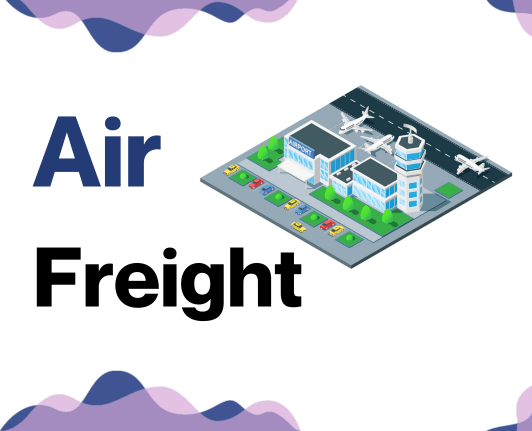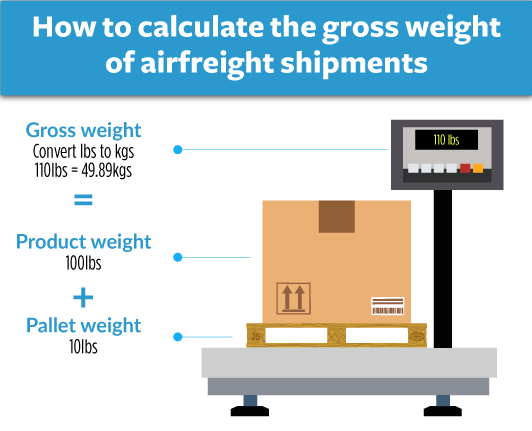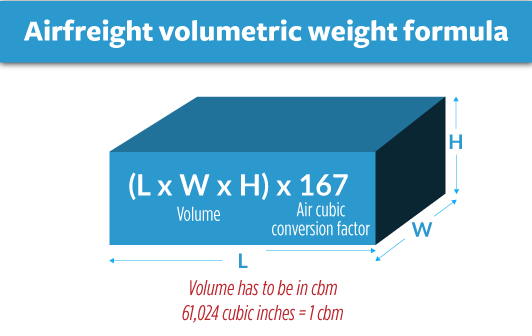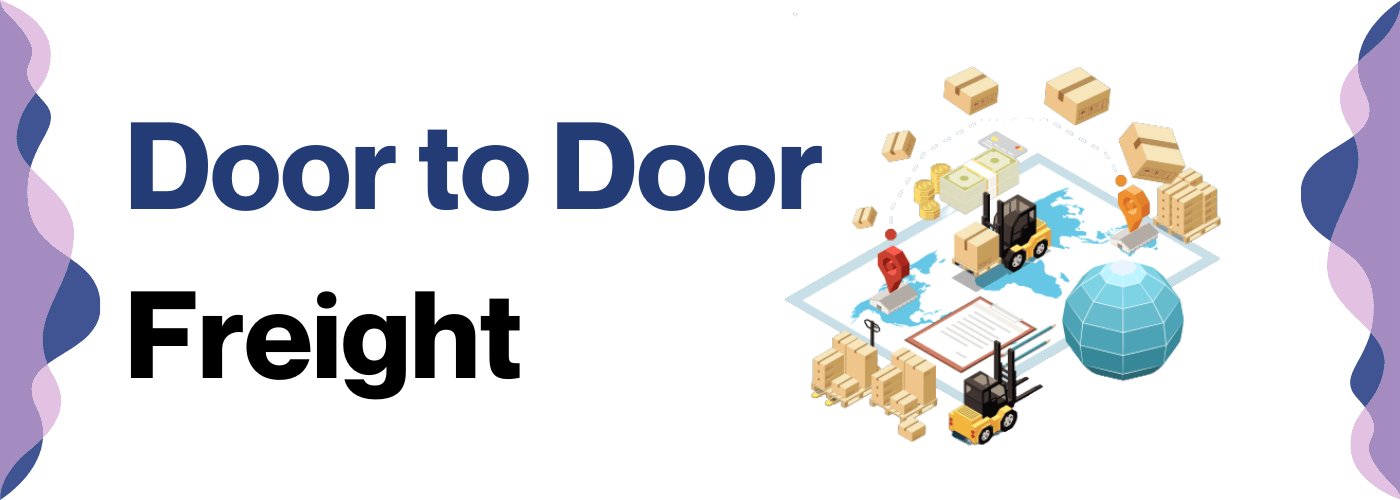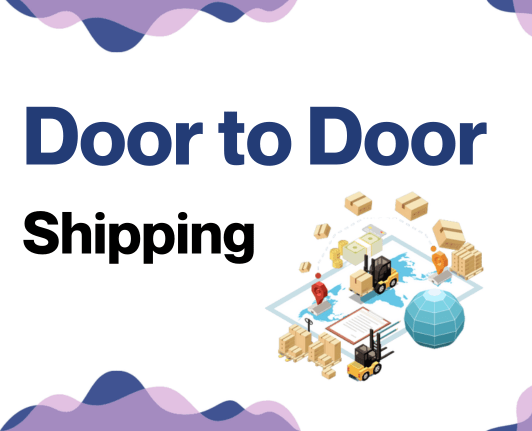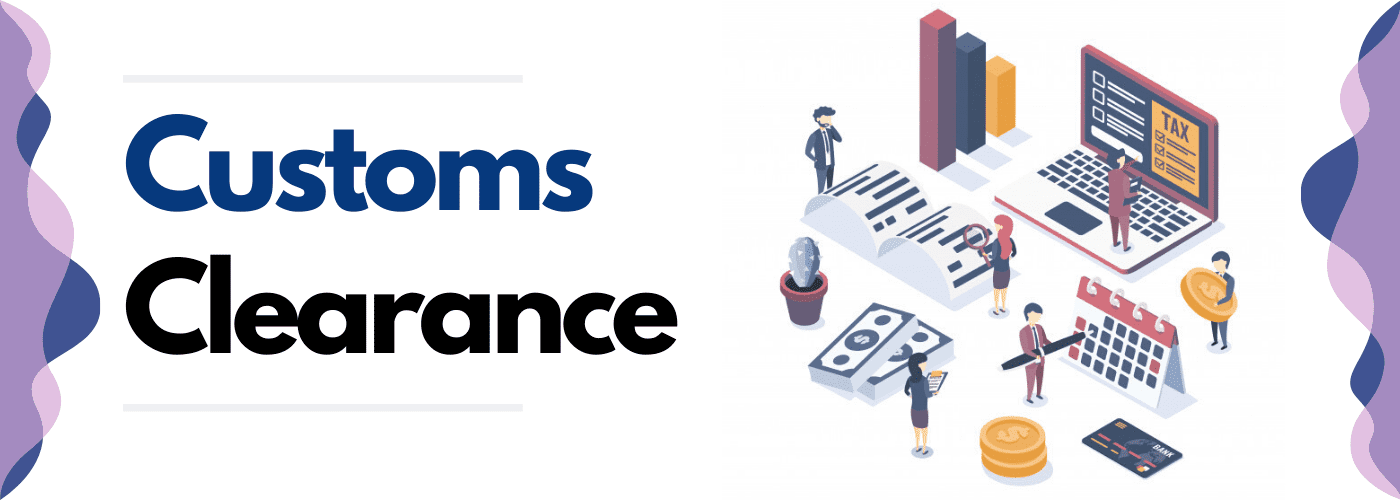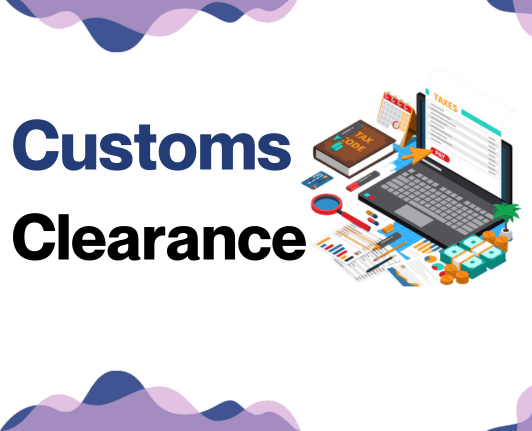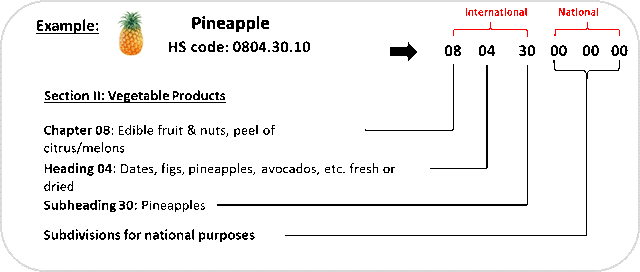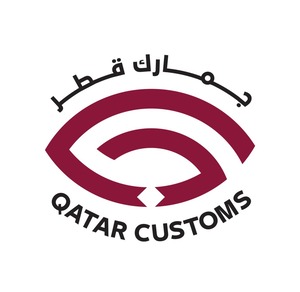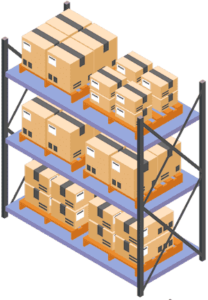Ever wondered why there are no direct camel routes for shipping goods from Qatar to Germany? Well, you might be shocked to learn, it's not exactly time or cost effective. The major hurdles businesses face when transporting goods between these two vibrant nations often revolve around unravelling the complexities of rates, anticipated transit times, and the knots of customs regulations.
Well, you are in luck! This guide will empower you with an understanding of different freight options - be it air, sea, road, or rail, along with shedding light on customs clearance, duties, and taxes. It is compiled with a unique blend of information and advice, all tailored especially for businesses like yours. If the process still feels overwhelming, let DocShipper handle it for you! We are an international freight forwarder committed to transforming hurdles into springboards of success in your shipping journey. So, buckle up and let's dive in!
Which are the different modes of transportation between Qatar and Germany?
Choosing the best transport method for shipping goods from Qatar to Germany depends on several key factors, just like picking the right tool for a job. Imagine you're planning a journey. A bike would be too slow, a car might get stuck in traffic, but a plane? Just right. It's a bit like that. The airlift offers swiftness given the lengthy 4,800 km journey and landlocked hurdles posed by countries in between. Ocean routes, although lengthy, present cost-saving opportunities. Careful consideration of your business needs, like speedy delivery or budget-friendliness, can help select the perfect 'vehicle' for your cargo’s 'journey'.
How can DocShipper help?
Shipping goods from Qatar to Germany? Let DocShipper simplify the process for you. Our expertise includes everything from customs clearance to arranging transport. Got any questions? Our consultants are a call away! Reach out today for a free, no-obligation quote in under 24 hours. Let's make your logistic needs easy!
DocShipper Tip: Sea freight might be the best solution for you if:
- You're dealing with hefty quantities or large-scale goods. Sea freight is your go-to for maximizing space without stretching your budget.
- Your cargo doesn't have an urgent deadline, as sea freight typically has longer transit times compared to air or rail.
- Your shipping routes are between major ports, allowing you to leverage the extensive global network of sea shipping lanes.
Sea freight between Qatar and Germany
Ocean shipping between Qatar and Germany—two industrial powerhouses, isn't just about sending goods across the sea. It's about forging connections and strengthening a dynamic trade relationship. The hustle and bustle at Hamad Port in Qatar and the Hamburg Port in Germany testify to this bustling trade activity. Over countless miles of sea waves, a myriad of products find their way from the arid landscapes of Qatar to the vibrant cityscapes of Germany. Despite being time-consuming, ocean shipping presents an excellent cost-effective option for high-volume shipments.
Yet, for as straightforward as it may seem, shipping between these countries often winds up more like solving a multi-layered puzzle. It’s easy to trip over a regulatory snare or get entangled in logistical headaches. But don't fret; there are ways to dodge these stumbling blocks. With the right knowledge and best practices, the path to smooth ocean shipping starts to clear up, which we'll explore in this guide. In shipping, as with the mighty sea, knowledge is power!
Main shipping ports in Qatar
Hamad Port
Location and Volume: Occupying a site at Umm Al-Houl, Qatar, the Hamad Port is instrumental in bolstering the country's international trade, boasting an annual shipping volume of approximately 2 million TEUs.
Key Trading Partners and Strategic Importance: Hamad Port has established extensive trade links, primarily with Asian countries such as China, India, and Oman. This port is strategically situated, offering direct access to the Arabian Gulf, and providing an international gateway for trade in and out of Qatar.
Context for Businesses: If your enterprise is considering expanding in the Middle Eastern or Asian markets, Hamad Port's strategic geographical location and robust trading network could play a pivotal role in your logistics strategy.
Ras Laffan Port
Location and Volume: Ras Laffan Port, located in the north of Qatar, is a significant industrial hub, primarily catering to the Liquefied Natural Gas (LNG) and petroleum industry. Its shipping volume relates primarily to energy products, with the port boasting one of the largest LNG exporting facilities in the world.
Key Trading Partners and Strategic Importance: The port's key trading partners are predominantly Asian countries such as India, Japan, South Korea, and China due to their high demand for LNG. The strategic significance of Ras Laffan is underscored by its pivotal role in powering global energy needs.
Context for Businesses: If your business operates within the energy sector, particularly LNG, then the Ras Laffan Port could be central to your shipping strategy, owing to its capacity and strategic focus on energy exports.
Umm Said (Mesaieed) Port
Location and Volume: The Umm Said (Mesaieed) Port, located in the eastern part of Qatar, plays a crucial role in handling general cargo, with a shipping volume boosted by its advantage of a dedicated container terminal.
Key Trading Partners and Strategic Importance: The port's strategic trading partners are largely countries in the Gulf Cooperation Council (GCC), along with other nations involved in commodities and general trade.
Context for Businesses: If your enterprise focuses on general trade goods or commodities in and out of the GCC, the Umm Said Port could be integral to your logistics approach, benefiting from its all-roundedness in handling diverse cargo types.
Main shipping ports in Germany
Port of Hamburg
Location and Volume: The Port of Hamburg is located on the river Elbe, offering direct connections to the North and Baltic Seas. It handles a shipping volume of about 9.3 million TEU annually, marking it as one of the busiest in Europe.
Key Trading Partners and Strategic Importance: Most significantly it connects with China, Russia, and the USA among others. Its strategic importance lies in its inland location, allowing for easy access throughout the European hinterland.
Context for Businesses: If you plan to reach deep into the European markets with your goods, you might consider the Port of Hamburg due to its excellent connectivity and high handling volume.
Port of Bremen
Location and Volume: The Port of Bremen/Bremerhaven is situated on the estuary of the River Weser and is connected to the North Sea. It is Germany's second-largest seaport, boasting a shipping volume of roughly 5.5 million TEU.
Key Trading Partners and Strategic Importance: This Port primarily trades with countries in Asia, especially China, along with significant trade with European and North American nations. Its strategic importance rises from being one of the world's busiest container ports and having efficient connections to the German hinterland.
Context for Businesses: Looking to cater to Asian, European, or North American markets? The Port of Bremen could be a key addition to your shipping strategy due to its significant worldwide trade links and high-volume capacity.
Port of Wilhelmshaven
Location and Volume: Residing in the southern part of the Jade Bight in Wilhelmshaven, this port has an annual shipping volume of around 0.5 million TEU.
Key Trading Partners and Strategic Importance: The Port’s key trading partners primarily include Asia and North America. As the only German deep-water port, it can accommodate fully laden Ultra Large Container Ships ULCS regardless of the tide.
Context for Businesses: If your shipping strategy involves handling large volumes, or includes major markets in Asia or North America, Port of Wilhelmshaven could be your ideal choice thanks to its capacity for taking in Ultra Large Container Ships.
Port of Lübeck
Location and Volume: The port city of Lubeck, directly accessible to Baltic countries, houses this port with an annual shipping volume of 0.85 million TEU.
Key Trading Partners and Strategic Importance: Lübeck is a significant transportation hub for goods moving in and out of Northern and Eastern Europe, primarily dealing with Russia, Finland, and the Baltic States.
Context for Businesses: If you're exploring expansions in Northern and Eastern Europe, Port of Lübeck might be a perfect fit, given its strategic location and strong trading networks.
Port of Rostock
Location and Volume: Located on the Warnow River in Northern Germany, the Port of Rostock has a shipping volume of approximately 1 million TEU annually.
Key Trading Partners and Strategic Importance: It operates heavily with Scandinavian and Russian markets. The Port also holds significance due to its integration with ferry services and its position as Northern Europe's largest Baltic port.
Context for Businesses: Aiming at Scandinavian or Russian markets with your goods? Port of Rostock can offer you robust links to these regions and is well-adapted to various modes of transport for maximum flexibility.
Port of Kiel
Location and Volume: Nestled in the southeastern shore of the Kiel Fjord, this port has a shipping volume of about 1.35 million TEU per year.
Key Trading Partners and Strategic Importance: It's closely linked with Norway, Sweden, and other Baltic Sea nations. Its notable feature is that it functions as a leading passenger ferry port in Germany.
Context for Businesses: If your shipping strategy involves passenger goods or reaching out to markets in Norway or Sweden, the Port of Kiel should be on your radar due to its strong passenger ferry operations and established relationships with these nations.
Should I choose FCL or LCL when shipping between Qatar and Germany?
Choosing the right sea freight option between Qatar and Germany can make or break your shipment's success. It's not just a matter of costs, but also delivery speed and smooth procedures. Have you ever heard of Full Container Load (FCL) and Less than Container Load (LCL) or consolidation? Understanding these two options is crucial in crafting an optimal shipping strategy. Let's dive deeper into FCL and LCL, their differences and how to select the one that best suits your shipping needs.
LCL: Less than Container Load
Definition: LCL (Less than Container Load) shipment is a mode of sea freight for cargo that does not fill an entire 20 or 40-foot container.
When to Use: LCL freight is ideal when your cargo is between 1 to 15 CBM. This is a more flexible and cost-effective option for exporters with lower volume loads.
Example: Suppose a small business in Qatar is exporting 10 CBM of handicrafts to Germany. It does not make economic sense for this business to hire a full-size container. Here, LCL becomes a viable option, allowing the business to share container space with other businesses and thus, save costs.
Cost Implications: LCL freight quotes depend on the amount of space used in the container, with charges per CBM. This makes LCL shipment a cheaper choice for smaller cargoes, as the cost of using an FCL would distribute over a smaller quantity of goods, making the price per unit shipped higher. However, remember that there might be additional costs like bundling or handling fees.
FCL: Full Container Load
Definition: FCL, or Full Container Load, refers to a shipment method where a single exporter or importer owns all the items in a shipping container (FCL container). This is different from Less Container Load (LCL), where multiple parties share the same container.
When to Use: FCL shipping is best suited when your cargo occupies more than half of a 20'ft container, which corresponds to roughly 14CBM to 15CBM. Choosing FCL offers two main benefits: it is cost-effective for high volume shipments because the cost of a full container will often be lower than paying for space in shared containers (LCL), and it provides increased safety as your goods are not affected by other shipments.
Example: Suppose you are a manufacturer exporting 30 CBM of machinery parts from Qatar to Germany. The best option is to utilize FCL shipping through either a 20'ft container or a 40'ft container, depending on the cargo size. This ensures you pay a single fcl shipping quote and your goods are safely sealed from origin to destination.
Cost Implications: The price of FCL shipping depends on the type of container chosen. Expenses mount based on distance, volume, and the nature of the goods. Despite these variables, FCL often turns out to be more economical for substantial cargo volumes than LCL shipping.
Unlock hassle-free shipping
Struggling to decide between consolidation and a full container for your cargo shipment from Qatar to Germany? DocShipper, your trusted freight forwarder, is here to help. Our team of ocean freight experts utilize their extensive knowledge in freight volumes, cargo types, and costs to provide tailored solutions that suit your specific needs. Instead of wrestling with the complexities of international shipping, let DocShipper make it hassle-free for you. Reach out to us now to receive a free estimation for your shipping needs.
How long does sea freight take between Qatar and Germany?
Sea freight from Qatar to Germany typically spans across several weeks, with various elements like the specific ports of departure and arrival, the weight and nature of your shipment playing a significant role in determining the exact transit time. It is highly recommended to reach out to seasoned freight forwarders like DocShipper to get a detailed and customized quote for your shipping requirements.
Here's a rough estimate of average transit times between major seaports in both countries:
| Port in Qatar | Port in Germany | Average Transit Time |
| Doha | Hamburg | 21-30 |
| Doha | Bremen | 14-24 |
| Doha | Rostock | 21-30 |
| Doha | Wilhelmshaven | 21-30 |
*Remember, these are only estimates and actual transit time can vary. For the most accurate timeline, we recommend contacting specialist freight forwarders like DocShipper.
How much does it cost to ship a container between Qatar and Germany?
Understanding ocean freight rates between Qatar and Germany can be complex. With costs per cubic meter varying broadly, pinpointing an exact price isn't feasible. Factors like your Point of Loading, Point of Destination, the carrier you choose, the nature of your goods, and monthly market fluctuations strongly influence these ever-changing rates. But worry not! Our savvy shipping specialists don't leave you navigating this maze alone! We're here to get you the best rates, treating your unique shipping needs with the precision they deserve. Remember, we quote case-by-case, ensuring your shipping cost is tailored to your specific context.
Special transportation services
Out of Gauge (OOG) Container
Definition: An OOG container or Out of Gauge cargo refers to goods that exceed the dimensions of standard shipping containers.
Suitable for: This is perfect for items too bulky or large to fit into standard containers, such as machinery, vehicles, construction materials.
Examples: industrials boilers, propellers, construction equipment are ideal items for this method.
Why it might be the best choice for you: If your cargo doesn't fit within the dimensions of standard containers and requires special handling due to its size or weight, this could be your best bet.
Break Bulk
Definition: Break bulk refers to goods that must be loaded individually onto the vessel, not in containers.
Suitable for: Items such as timber, steel bars, or big machinery that are typically loaded using cranes or other lifting gear.
Examples: steel beams, logs, oversized machinery such as construction equipment or windmills.
Why it might be the best choice for you: If you ship cargo that can't be containerized due to its size or shape, break bulk might be an optimal solution.
Dry Bulk
Definition: Dry bulk refers to the transport of homogeneous, loose cargo load, often in massive quantities, such as coal, grain, or minerals.
Suitable for: Commodities that are shipped unpackaged in large quantities.
Examples: sand, fertilizers, coal, or grain.
Why it might be the best choice for you: If you're in an industry like agriculture or mining and need to ship large volumes of loose materials, dry bulk is the most practical and cost-effective method.
Roll-on/Roll-off (Ro-Ro)
Definition: Roll-on/Roll-off shipping refers to vessels designed to carry wheeled cargo like cars, trailers, trucks, or railroad cars that are driven on and off the ro-ro vessel onto their own wheels or using a platform vehicle.
Suitable for: Automobiles, trucks, semi-trailer trucks, trailers, and railroad cars.
Examples: cars, farming equipment, construction vehicles, or even locomotives.
Why it might be the best choice for you: If your business involves the international shipping of motor vehicles or machinery, Ro-Ro is a specially designed, secure, and efficient option.
Reefer Containers
Definition: Reefer containers or refrigerated containers are temperature-controlled containers used for shipping perishable goods.
Suitable for: Perishable goods such as fruits, vegetables, dairy products, or pharmaceuticals.
Examples: meat, fish, medicines, or dairy products.
Why it might be the best choice for you: If you're exporting perishable goods that require specific temperatures during transit, these containers will ensure your product remains fresh and unspoilt.
Navigating the best sea freight option between Qatar and Germany can be complex – but it doesn't have to be. At DocShipper, we have the expertise to handle all logistics for you. Reach out to us for your free shipping quote within 24 hours. Let's make your next shipment a breeze.
DocShipper Tip: Air freight might be the best solution for you if:
- You're up against the clock or have a non-negotiable delivery date. Air freight is your fastest bet for meeting tight timelines.
- Your shipment is on the smaller side, falling below 2 CBM. Air freight is particularly well-suited for compact cargo loads.
- Your goods are destined for locations that aren't well-served by maritime or rail options. Air freight expands your reach by connecting you to a vast array of international airports.
Air freight between Qatar and Germany
Imagine speeding your high-value, compact products from Qatar to Germany as swiftly as a sports car racing through the autobahn. That's the power of air freight shipping - it's fast, reliable, and perfect for smaller shipments. Think designer accessories, important legal documents, or urgent auto-parts.
But while air freight sounds like the superhero of international shipping, problems arise when shippers skip the crucial steps. It's like assuming our sports car will always run on regular fuel - mistakes are often in the details like miscalculating goods' weight or neglecting best practices, inflating costs astronomically. That's where our guide enters the picture, shedding light on these overlooked aspects.
Air Cargo vs Express Air Freight: How should I ship?
Choosing the right avenue for your Germany-Qatar shipments can feel like a puzzle. If you're weighing up air cargo and express air freight, it's basically a question of space in an airline versus a dedicated plane. Business needs vary, so let's figure out your best fit in the air freight spectrum to ensure your commercial success!
Should I choose Air Cargo between Qatar and Germany?
Wondering if air cargo is your best option for shipping between Qatar and Germany? This method can be cost-effective and reliable, particularly if your cargo weighs over 100/150 kg (220/330 lbs). Significant players in the air freight market, like Qatar Airways Cargo and Lufthansa Cargo, facilitate consistent connections between these countries. However, be mindful of longer transit times due to scheduled flights. If budget is a significant factor in your decision, air cargo might indeed be a fitting choice. Explore both Qatar Airways Cargo and Lufthansa Cargo for more details.
Should I choose Express Air Freight between Qatar and Germany?
When shipping less than 1 CBM or 100/150 kg (220/330 lbs) of cargo, express air freight can be a viable option. This is a specialized service exclusively using cargo jets and can offer fast, reliable delivery. Several world-renowned firms like FedEx, UPS, or DHL provide this service. They guarantee speed and security, perfect for business demands. When you're under pressure to send small, urgent shipments from Qatar to Germany, this can be your lifeline. This solution provides a shorter transport time - so it might just be the ideal answer to your shipping needs.
Main international airports in Qatar
Hamad International Airport
Cargo Volume: Hamad International Airport handles over 2.1 million tonnes of cargo annually, making it one of the busiest cargo hubs in the Middle East.
Key Trading Partners: Major trading partners include China, United States, United Arab Emirates, India, and Germany. Key industries served encompass consumer goods, industrial equipment, fashion, and perishable items.
Strategic Importance: Located at the crossroads of key routes between Asia, Africa, and Europe, Hamad International Airport serves as a critical hub in global trade routes, connecting businesses worldwide.
Notable Features: The airport has an advanced cargo terminal, equipped with state-of-the-art facilities supporting a wide range of cargo, including livestock, perishables, and valuable items. Automated cargo handling systems and dedicated freighter services provide seamless operations.
For Your Business: With Hamad International Airport's significant geopolitical location, advanced cargo handling infrastructures, and wide-ranging international connectivity, your business can enjoy a competitive edge. The availability of direct flights to multiple destinations worldwide offers faster delivery times, crucial for products with a tight timeline. The airport's dedication to handling a comprehensive range of items ensures your product, regardless of its type, will be transported with the utmost efficiency and care.
Main international airports in Germany
Frankfurt Airport
Cargo Volume: Frankfurt Airport is Europe's largest cargo airport, handling over 2.3 million metric tons of cargo per year.
Key Trading Partners: Significant trading partners include China, the United States, and Japan.
Strategic Importance: The airport is a major hub for international trade due to its central location in Europe and excellent connections to the road and rail network.
Notable Features: Frankfurt Airport boasts two Runway systems, sophisticated cargo handling facilities, and a dedicated air cargo city.
For Your Business: If your markets are throughout Europe and you need comprehensive road and rail links to deliver your goods, Frankfurt Airport might be a critical part of your shipping strategy.
Leipzig/Halle Airport
Cargo Volume: As the second-largest cargo airport in Germany, Leipzig/Halle Airport handles more than 1.38 million metric tons of freight per year.
Key Trading Partners: Main trading partners are Russia, Poland, and other EU countries.
Strategic Importance: Leipzig/Halle Airport is Europe's fastest-growing cargo airport, making it a major player in the global logistics chain.
Notable Features: With a 24/7 operating permit for cargo flights and direct connections to the Trans-European traffic network, it provides excellent trading links.
For Your Business: If round-the-clock operation and rapid growth align with your goals, Leipzig/Halle Airport could be pivotal to your business's logistics chain.
Cologne Bonn Airport
Cargo Volume: Cologne Bonn Airport moves over 860,000 metric tons of air cargo annually.
Key Trading Partners: Key trading partners include the United States, China, and other EU states.
Strategic Importance: With its central location in Europe and around-the-clock operations, Cologne Bonn Airport is an important hub for express cargo flights.
Notable Features: The airport hosts a free-trade zone and comprehensive cargo facilities, including aircraft maintenance, fueling, and freight build-up.
For Your Business: If express cargo services and an integrated logistics center feature heavily in your business model, consider Cologne Bonn Airport for your shipping strategy.
Munich Airport
Cargo Volume: Moving over 360,000 metric tons of freight annually, Munich Airport is an important player in regional and international cargo transportation.
Key Trading Partners: The airport primarily serves trade links with North America, Asia, and the Middle East.
Strategic Importance: Munich Airport acts as a gateway to Southern Germany and other Central European regions with substantial manufacturing industries.
Notable Features: It has state-of-the-art cargo terminals and a 24/7 operational permit for cargo flights.
For Your Business: If your supply chain heavily involves Southern Germany or Central Europe, then Munich Airport's capabilities might be crucial to your operations.
Hamburg Airport
Cargo Volume: Hamburg Airport handles around 150,000 metric tons of cargo per year.
Key Trading Partners: Major trading partners are primarily European countries, followed by Asia and North America.
Strategic Importance: Its location in Northern Germany enables direct access to the Scandinavian and Baltic markets.
Notable Features: The airport features modern cargo facilities, including temperature-controlled storage for perishable or pharmaceutical goods.
For Your Business: If your market is concentrated in Northern Europe and you regularly ship temperature-sensitive goods, Hamburg Airport could play an essential role in ensuring their safe delivery.
How long does air freight take between Qatar and Germany?
Shipping from Qatar to Germany via air freight typically takes between 3 to 5 business days. However, the exact transit time can fluctuate based on a variety of factors such as the specific airports involved, the weight and nature of the cargo, and whether direct or indirect flights are used. To get a precise estimate for your specific shipment, it is highly recommended to consult a freight forwarding expert like DocShipper.
How much does it cost to ship a parcel between Qatar and Germany with air freight?
Air freight costs from Qatar to Germany average around $2.50-$12/kg. However, exact costs can fluctuate significantly due to various factors including distance from departure and arrival airports, parcel dimensions, weight, and the nature of goods. Therefore, it is crucial to understand that this figure may not represent your specific shipping cost. But fear not, as our dedicated team is equipped with expertise to provide efficient and cost-effective solutions tailored to your unique logistics needs. We quote on a case-by-case basis to ensure you receive the best possible rate. Reach out to us today and receive a free quote within the next 24 hours.
What is the difference between volumetric and gross weight?
Gross weight refers to the actual total weight of a shipment, including the goods and all packaging. On the other hand, volumetric weight, or dimensional weight, measures a parcel's density, factoring in the package's size, not just its weight.
For air cargo, volumetric weight is calculated using the formula: Length (cm) x Width (cm) x Height (cm) / 6000. Gross weight is simply summed up using a scale and is measured in kg. For a parcel that's 100cm x 50cm x 50cm, the volumetric weight would be (100x50x50)/6000 = 41.67 kg, or 91.71 lbs.
Express air freight services operate similarly but use a different formula to get the volumetric weight: Length (cm) x Width (cm) x Height (cm) / 5000. Hence, the aforementioned parcel would have a volumetric weight of 50kg, or 110.23 lbs, in express air freight.
Freight charges are based on the greater value between the gross and volumetric weight because it's costlier to transport bulky, lightweight items than heavy, compact ones. This helps ensure fair pricing in the air freight industry.
DocShipper tip: Door to Door might be the best solution for you if:
- You prioritize a smooth, hassle-free shipping experience from start to finish. Door-to-door services manage the entire journey, from initial collection to ultimate delivery.
- You appreciate streamlined communication and would rather deal with one person. A dedicated agent is usually assigned to oversee every detail of your door-to-door shipment.
- You want limit the number of touchpoints for your cargo. Door-to-door services reduce the frequency of transitions between various transport methods, thereby lowering the likelihood of damage or loss.
Door to door between Qatar and Germany
Embarking on an international door-to-door shipping journey from Qatar to Germany? This method is your all-inclusive ticket, handling everything from pickup to delivery at your desired locations. It’s a stress-buster, ensuring smoother transit and fewer customs obstacles. With lots to cover, including the distinct advantages, buckle up as we dive deeper into this streamlined shipping process!
Overview – Door to Door
Exploring the maze of international logistics from Qatar to Germany can be daunting. But, fear not! Our door-to-door shipping service simplifies the process, taking your goods from origin to the final destination, hassle-free. It's the system most clients at DocShipper find reliable due to its end-to-end management - no worries about customs, logistics, or paperwork. Naturally, this may cost more and transit times may vary. However, the peace of mind and time saved are priceless, resolving your major shipping concerns. Discover why it’s often the go-to choice in this part of our guide!
Why should I use a Door to Door service between Qatar and Germany?
Do the mind-boggling central intricacies of international shipping feel like trying to unscramble an egg? A Door to Door service from Qatar to Germany might just be your golden goose.
1. Ease of Logistics: Say goodbye to the labyrinth of paperwork and administrative procedures. Door to Door service providers handle everything from beginning to end, freeing you from logistical migraine. The focus remains solely on your business, not import and export formalities.
2. Timely Delivery: If you're racing against the clock, this service is a lifesaver. It ensures timely pickup, seamless transportation, and prompt delivery, so even the most urgent shipments arrive reliably.
3. Specialized Care: Got a Kraken in a crate? Not a problem, Captain! Complex or sensitive cargo will receive the specialized handling it needs, from artwork to machinery, all overseen by a single dedicated team.
4. Convenience: The beauty lies in its simplicity - goods picked up at your doorstep in Qatar and delivered directly in Germany. Minimized handling reduces the risk of loss or damage, and you remain cozy at your desk.
5. End-to-End Trucking: The icing on the cake is the trucking service, weaving through the labyrinth of Deutsche Autobahnen to reach the most remote corners of Germany. You’re no longer dealing with multiple parties; your cargo's entire journey is managed by a single entity.
So, in cracking the international shipping conundrum, Door to Door service really isn't a yolk! It's a full-platter solution for serene and streamlined logistics from Qatar to Germany.
DocShipper – Door to Door specialist between Qatar and Germany
Experience smooth, stress-free shipping from Qatar to Germany with DocShipper. As your dedicated freight forwarding professionals, we manage all aspects of your goods' journey: packaging, transport, customs clearance, across all transport modes - air, sea, road, rail. You can sit back and let us do the legwork. Reach out to us for a fuss-free quote within 24 hours or connect with our expert consultants for complimentary advice. Turn complex shipping into a simple process with your dedicated Account Executive. Entrust your logistics needs with us!
Customs clearance in Germany for goods imported from Qatar
Navigating the intricacies of customs clearance—clearing goods through customs barriers—for goods imported from Qatar to Germany can be labyrinthine. This complex process springs potential pitfalls such as unexpected fees, charges, and even the risk of goods getting stuck. Grasping the nuances of customs duties, taxes, quotas, and licenses is of utmost importance, with the stakes all too real. Don't worry though, we'll untangle these threads in the coming sections.
Remember, DocShipper is here to facilitate this crucial operation for you, handling goods from all corners of the globe. Looking to budget your project? Do drop a line to our team, providing the origin of your goods, their value, and the HS Code. These are fundamental to proceed with an estimation. Let's conquer international trade together.
How to calculate duties & taxes when importing from Qatar to Germany?
Getting ready to import from Qatar to Germany? Knowing how much you'll pay in customs duties and taxes ahead of time can save you both time and money. The estimate requires several key pieces of information: the country of origin, the Harmonized System (HS) code, the Customs Value, and any applicable tariff rates and additional taxes or fees.
Crucially, the first step in this journey is pinpointing the country where the goods were originally manufactured or produced. Not only is this essential for accurate calculations, but it's also the first piece of the puzzle that customs officials will look to in determining any payable duties and taxes.
Step 1 - Identify the Country of Origin
First off, knowing your product's country of origin is like holding a map; it guides your shipping journey. Five crucial reasons underline this:
1. Trade Agreements: Qatar and Germany, both WTO members, enjoy the benefits of numerous trade agreements that may lower your duties.
2. Product Restrictions: Specific goods require import restrictions, and origin identification helps navigate these waters smoothly.
3. Predetermined Rates: Customs uses origin data to apply appropriate duty rates, preventing costly surprises.
4. Duty Waivers: Knowledge of origin could untether you from paying certain duties.
5. Seamless Clearance: Lastly, anticipate fewer hiccups at the customs clearance frontier by knowing your product's origins.
Now, start by determining your product's birthplace. Are they made in Qatar, or are the components thoroughly 'Qatarian’? Understanding this can help tap into the preferential rates between these nations.
Carefully note that restrictions, like those on textiles or agricultural products, can affect shipment. Always stay in touch with a customs expert to prevent any trade regulation violations.
Remember, your import-export adventure's success hinges on each meticulous step, and identifying the product origin sits right at its helm. Happy shipping!
Step 2 - Find the HS Code of your product
The Harmonized System Code, also known as HS Code, is a universal classification framework for goods, established by the World Customs Organization. An essential tool for international trade, the HS Code allows customs to identify what is being imported or exported, and apply respective duties or restrictions.
Your product's HS Code can often be obtained directly from your supplier, given they are intimately familiar with their product specifics and the applicable regulations. That said, there are instances where this information might not be readily available.
Fear not, you can independently find your HS Code using an online tool such as the Harmonized Tariff Schedule. To do so, simply input the name of your product into the search bar. Once the results are displayed, refer to the Heading/Subheading column, and you'll find your associated HS Code listed there.
On a critical note, it's crucial to ensure that the HS Code you identify is accurate. Entry mistakes can lead to shipping delays, unforeseen customs duties, and potential fines. Precision and attention to detail in this step can save a lot of time and financial resources in the future.
Of course, to better assist you, here's an infographic showing you how to read an HS code. It provides a visual representation to guide you through the process, making it even easier to understand.
Step 3 - Calculate the Customs Value
Calculating the customs value isn't as daunting as it sounds, though it does differ from the product's price. Imagine you're importing a batch of exquisite Qatar jewelry, valued at $2000. Here’s the catch, your customs value isn't just about the jewelry’s price tag.
The customs value is, in fact, the Combined Insurance and Freight (CIF) value. This means it's the price of your goods ($2000) + international shipping cost (let’s say, $250) and the insurance cost (around $50). Thus, your overall customs value equals to $2300 and that's what the German custom authorities consider. A more accurate understanding of these calculations can save you from unexpected charges and provide a smoother clearance route. Use this formula and have a more predictable shipping experience. Happy shipping!
Step 4 - Figure out the applicable Import Tariff
In the world of international trade, an import tariff is a tax imposed on goods being shipped from one country to another. It's calculated based on the product's Harmonized System code, also known as the HS code. While arriving at the correct amount might seem complex, it's actually systematic.
Germany, being in the European Union, utilizes the TARIC system for defining and applying tariffs to imported goods. You'll need to input both your item's HS code and the country of origin into the TARIC System - European Customs to discover the correct tariff.
Let's use an example to clarify. Assume that the HS code for your product - let's say premium Qatari dates - is 08041000 (Dates, fresh). After inputting this code and Qatar as the origin country into the TARIC system, you might find a tariff rate of 5%.
Now, consider if your total cost, including insurance and freight (known as CIF), comes to USD 10,000. You'd simply multiply this by your tariff rate to calculate the import duty. Using our example, this works out as USD 10,000 5/100 = USD 500.
So the next time you're importing a shipment from Qatar to Germany, keep the TARIC consultation tool handy. It's the key to unlocking your tariff mysteries!
Step 5 - Consider other Import Duties and Taxes
Beyond the standard tariff, you may encounter additional import duties when importing goods from Qatar to Germany, which depend on both the product's nature and its country of origin. For instance, you might need to pay excise duties on items like alcohol or tobacco, though the specific rates can vary.
Additionally, watch out for anti-dumping taxes. These are designed as a tool against companies dumping products at unfairly low prices, usually well below their production cost, onto the German market. If a product from Qatar is deemed to have been sold in such a way, you may find yourself facing this form of duty.
Keep in mind that both these charges are only examples and the actual figures may differ.
Most importantly, you'll have to consider the Value Added Tax (VAT). Germany's standard VAT rate is 19%. To calculate the amount you’ll have to pay, use this formula: (Cost of the goods + Transport charges + customs duties) x VAT rate. So for a $100 product with a $10 shipping charge and a $5 import duty, the VAT would be ($100 + $10 + $5) x 0.19 = $22.45.
Understanding these additional costs upfront can help you better budget your imports and avoid any unpleasant financial surprises on arrival in Germany.
Step 6 - Calculate the Customs Duties
Calculating customs duties when importing goods from Qatar to Germany can seem complex, but it's manageable if you break it down. The base formula is: Customs Duties = Customs Value x Duty Rate. An important tip - always convert your values into USD for uniformity since customs use this currency.
Example 1: Let's say you exported goods worth $10,000, and the duty rate is 5%. The customs duties would be $10,000 x 0.05 = $500. No VAT in this case.
Example 2: When VAT is applied (typically 19% in Germany), it's calculated as: VAT = (Customs Value + Duties) x VAT Rate. So for goods worth $15,000, duties at 10%, and VAT at 19%, you'd pay $1500 in duties and $3165 in VAT.
Example 3: For arduous goods, anti-dumping taxes and Excise Duty might also apply. If you have the same example as before but with an additional 4.5% anti-dumping tax and $270 as Excise Duty, you'd have to pay an extra $675 for the tax and the designated Excise Duty.
Getting the hang of this? Great! But it can still be a hassle. That's why DocShipper offers full-service customs clearance worldwide. We ensure you're never overcharged and can retrieve precise quotations within 24 hours. Go ahead and reach out - we've got you covered.
Does DocShipper charge customs fees?
While DocShipper operates as a custom broker in Qatar and Germany, we don't charge customs duties but help you navigate through this process instead. Our role involves charging for customs clearance, not the duties and taxes which are transferred directly to the government. To ensure transparency, we provide you with official documents from the customs office verifying the exact amount paid in duties and taxes. Think of it like paying a guide to help you through a complex forest, not the forest itself.
Contact Details for Customs Authorities
Qatar Customs
Official name: General Authority of Customs, Qatar
Official website: www.customs.gov.qa/
Germany Customs
Official name: Generalzolldirektion (General Customs Directorate of Germany)
Official website: www.zoll.de/
Required documents for customs clearance
Understanding customs clearance can be daunting, especially when juggling terms like Bill of Lading and CE standard. Without the right documents, hiccups in your shipping process can escalate quickly. We're here to help you get a handle on what these key documents really mean, and how to use them effectively.
Bill of Lading
The Bill of Lading (BoL) acts as your shipping lifeline when transporting goods between Qatar and Germany. Think of it as your transfer of ownership receipt with key freight details, including cargo description and contractual terms. It's all too crucial when it comes to customs clearance.
Ever heard of the game changer, electronic (also known as telex) release? Tossing paper BoL procedures, it speeds up document transfer, saving you from stress and delays at both Qatari and German ports.
For air shipments, the Air Waybill (AWB) steals the show, serving a similar role as the BoL.
Your takeaway? Make sure your BoL or AWB is accurate and secure. It's not just about ticking off a customs requirement, it can also save you from untimely shipment halts and cost overruns. So, whether on the sea or in the air, your freight's successful journey relies heavily on a well-managed BoL or AWB.
Packing List
When shipping goods from Qatar to Germany, your Packing List is your lifeblood. Think of it as your inventory tool, outlining every tiny detail of what's in your shipment - quantities, descriptions, weights. It doesn't matter if it's by sea or air freight, you need this document to get your goods past both countries’ customs. Accuracy here is non-negotiable.
For example, let's say your goods were ceramic mugs. If the Packing List is incorrect - maybe it says plastic mugs instead - customs will flag it. This can lead to delays, unexpected costs, or even your shipment being rejected. So, take the time, triple-check your list, and keep your shipping journey smooth.
Commercial Invoice
When shipping goods from Qatar to Germany, your Commercial Invoice plays a pivotal role in a smooth customs clearance. It's crucial to include details like product description, HS code, consignor, and consignee details to ensure clear communication with customs officers. This forms the basis of your customs duties. Remember, transparency is key.
For example, an unclear product description could lead to costly delays or fines. Aligning your Commercial Invoice with other shipping documents, such as the Bill of Lading, can streamline the process. Misalignment could mean your goods are on hold at customs, causing an unplanned pause in your supply chain. So, investing time to ensure accuracy and consistency in your documentation is well worth the effort.
Certificate of Origin
When shipping between Qatar and Germany, securing a Certificate of Origin (CoO) is a crucial step. Why? Because it serves as a testimony of where your goods are manufactured, directly influencing your customs duty rates - sometimes offering preferential rates. Think of it as your product's passport!
For instance, your Doha-based business might export machinery made in Japan. By indicating Japan as the country of manufacture in your CoO, you can enjoy certain duty benefits due to specific international agreements. In essence, the document is vital for not only giving authentic transparency about your goods but also for potentially saving your business a heap in shipping costs. Therefore, never underestimate the power of accurately marked CoO.
Certificate of Conformity (CE standard)
If you're shipping goods from Qatar to Germany, you need to be aware of the Certificate of Conformity (CE standard). This isn't about quality assurance, but rather, it's a declaration that your goods comply with European Union (EU) safety regulations. So, if you want to tap into the German market, CE marking is non-negotiable.
It's different from the US standards, where one confirms compliance rather than testing products to a particular standard. You can smoothly sail through the process by contacting an authorized body to examine your product, validate its conformity, and issue a certificate. It's gold in your pocket as it expedites the clearance process, getting your goods into Germany without a hitch.
Your EORI number (Economic Operator Registration Identification)
Shipping goods between Qatar and Germany? Then you’ll certainly need an EORI number. Think of it as your business's unique ID in the world of international trade. An EORI number ensures hassle-free tracking of your imports and exports within European Union boundaries. Without it, you may hit a roadblock during customs clearance.
Registration for an EORI is quite straight forward: you can apply through German Customs or via the European Commission's EORI portal. But remember, timing is crucial! Registrations typically get processed within a few days, but play it safe and apply well ahead of your shipment's departure. That way, you'll ensure a smooth journey for your goods from Qatar to Germany.
Get Started with DocShipper
Navigating customs between Qatar and Germany can be daunting. At DocShipper, your stress-free shipment is our command. We'll streamline every step of the customs clearance process for you, simplifying each detail. Unsure about where to start? Reach out today. We'll happily provide a free quote in less than 24 hours. Time to make your global trading worries a thing of the past.
Prohibited and Restricted items when importing into Germany
When shipping goods to Germany, it's crucial to know which items can land you in hot water. Missteps can lead to fines or seized shipments. We've broken down the essentials on prohibited and restricted items for a hiccup-free import.
Restricted Products
1. Pharmaceutical Products: You might need a special permit from the German Medicines Agency (BfArM).
2. Weapons and Ammunition: You need to apply for a license from the Federal Office for Economics and Export Control (BAFA).
3. Narcotics: A special license is required from the German Federal Opium Agency.
4. Radioactive Materials: You need a license from the Federal Office for the Safety of Nuclear Waste Management (BfE).
5. Live Animals and Animal Products: You have to apply for a permit from the Federal Ministry of Food and Agriculture (BMEL).
6. Plants and Plant Products: A permit from the Federal Ministry of Food and Agriculture (BMEL) is mandatory.
7. Cultural Property and Antiques: For these goods, a permit from the Ministry of Economy and Energy (BMWi) is required.
8. Precursor Chemicals: A permit from the German Federal Opium Agency is needed.
Prohibited products
- Narcotics and illegal drugs
- Explosives and fireworks
- Firearms and ammunition without a permit
- Certain types of knives and weapons
- Products with Nazi symbols or propaganda
- Protected animal species and their derivatives without a special permit
- Certain types of plants and plant products
- Cultural goods without an authorization
- Counterfeit money and goods
- Unauthorized pharmaceuticals
- Tobacco products not intended for personal use
- Radioactive materials
- Certain types of hazardous materials.
Are there any trade agreements between Qatar and Germany?
Yes, there are substantial trade relations between Qatar and Germany, although no explicit FTAs or EPAs. Ties are especially strong in energy and industrial sectors, potentially benefiting businesses engaged in these areas. Interestingly, Qatar's significant investment in Deutsche Bahn AG could signal future synergies in logistics and transportation, making it worth tracking for those utilizing rail freight. Always consider how shifting trade dynamics could impact your shipping strategy between these countries.
Qatar - Germany trade and economic relationship
Strongly bonded through historical ties, the economic relations between Qatar and Germany have evolved significantly over time. Germany is Qatar's primary European trading partner, having witnessed reciprocal investments reaching billions in sectors like automotive, energy, and construction. For instance, in 2019, the trade volume exceeded €2.6bn, showcasing a stable economic partnership.
Germany's advanced machinery and car industry combined with Qatar's rich reserves of natural gas and petroleum, have enabled an exchange based primarily on these commodities. Moreover, Qatar has been a significant investor in Germany's diverse sectors like real estate, finance, and tech. Conversely, more than 64 German companies are currently operating in Qatar, marking a dynamic inflow of German technology and know-how provided for Qatari infrastructure projects, including the 2022 World Cup.
This trade framework, established over the years, underscores a robust and promising alliance, with many opportunities for businesses seeking to explore these markets.
Your Next Step with DocShipper
Moving goods between Qatar and Germany can feel like wrestling a maze of regulations and paperwork. The stakes are high, and a single misstep could cost time, money, and business reputation. That's where DocShipper's expertise steps in. From customs clearance to transport organization, we manage complex logistics with efficiency and ease. Ready to simplify your shipping process? Reach out to us today!
Additional logistics services
Explore beyond shipping and customs with DocShipper's additional services, completing your supply chain needs. We're here to simplify your logistics journey, from sourcing to final delivery.
Warehousing and storage
Scouting for reliable warehousing may be tough. Vital conditions, like temperature control for your gourmet chocolates, aren’t a luxury but a necessity. We’re just a click away to solving this, ensuring your products always remain in perfect condition. More info on our dedicated page: Warehousing.
Packaging and repackaging
When shipping from Qatar to Germany, ensuring your goods weather the journey starts with solid packaging and repackaging. Find a reliable agent, with experience in handling diverse products - from machinery parts to fragile glassware - to guarantee secure transit. Remember, a well-packed shipment can mean the difference between a smooth delivery and dealing with damage claims. Partner with the right team and you'll master this essential step. Learn more on our page: Freight packaging.
Cargo insurance
Sure, a mishap during transport can lead to untold costs, much worse than a fire at your warehouse. That's where cargo insurance steps in. It covers damages or loss caused during shipping, adding an extra layer of protection. For instance, your products get damaged during a thunderstorm at sea – fret not, insurance has your back! It's acting smart and preventing unwelcome surprises. Discover more on our dedicated page: Cargo Insurance.
Supplier Management (Sourcing)
Sourcing and procuring goods overseas can feel daunting. That's where DocShipper shines - we smooth out the entire procurement process for you. From finding trusted suppliers in Asia, Eastern Europe, and beyond, to bridging language gaps, we're your steadfast guide. Take, for instance, a German business sourcing building materials from Qatar - it's effortless with us! Ready to simplify your sourcing strategy? More info on our Sourcing services.
Personal effects shipping
Relocating between Germany and Qatar with valuable personal effects? Our expert team ensures your fragile or bulky objects, like antique furniture and artwork, are handled with utmost care and professionalism. Imagine us as an extension of your personal home-care, ensuring your treasured items safely journey door to door, whether it's Berlin to Doha or vice versa. We offer flexibility to suit your unique needs, because we understand that each item carries not just weight, but also emotional value.
Quality Control
Securing a seamless shipping journey from Qatar to Germany requires a keen eye on quality. Our quality control service mitigates risks and ensures your products meet German standards. Imagine an unexpected defect in your Qatar-manufactured furniture shipment - not a pretty sight for German customers, right? Prevent such scenarios with our meticulous inspections; we've got you covered.
Product compliance services
When it comes to global logistics, ensuring your goods meet destination criteria is crucial. Think of it as passing a test-- the better prepared, the higher the success rate. Our Product Compliance Services offer laboratory testing to certify your items align with all requisite regulations, avoiding hitches and delays. Imagine trying to send a toy to a market where it's not safety-standard compliant; it would be a no-go. So, ensuring compliance equals seamless shipping.
FAQ | Freight Shipping between Qatar and Germany | Rates - Transit times - Duties and Taxes
What is the necessary paperwork during shipping between Qatar and Germany?
In any shipping from Qatar to Germany, we at DocShipper ensure that the mandatory bill of lading for sea freight or airway bill for air freight are in place. We take this administrative burden off your shoulders. What you need to provide, on the other hand, are the packing list and the commercial invoice. It's important to remember that depending on the type of goods being shipped, additional documents may be required such as a Material Safety Data Sheet (MSDS) or certain certifications. Entrust us with your shipping process so we can help you navigate smoothly through these necessities.
Do I need a customs broker while importing in Germany?
While it's not strictly mandatory to use a customs broker when importing to Germany, we highly recommend it due to the intricate procedures, specific details, and essential documents required by customs authorities. At DocShipper, we make it our mission to represent your cargo during customs clearance for a majority of shipments. We navigate and handle the complexities of the process on your behalf, ensuring compliance and a smooth transition for your goods into Germany. Our expertise provides a seamless, stress-free import experience.
Can air freight be cheaper than sea freight between Qatar and Germany?
While we at DocShipper can't provide a one-size-fits-all answer due to varying factors like route, weight, and volume, we can offer some guidance. If your cargo is less than 1.5 cubic meters or 300 kg (660 lbs), air freight could potentially be cheaper. That being said, our dedicated account executives are committed to providing you with the most competitive option for your specific needs. We carefully evaluate all parameters and choose the best transport method according to your requirements and budget.
Do I need to pay insurance while importing my goods to Germany?
While shipping goods to Germany, there's no obligation for you to purchase insurance. However, as we all know, unforeseen incidents can occur, which might result in theft, damage, or loss of your goods. Based on our experience at DocShipper, we highly suggest that you consider getting insurance for your peace of mind. It will offer you financial protection in case anything out of the ordinary takes place during the transit of your goods.
What is the cheapest way to ship to Germany from Qatar?
When shipping from Qatar to Germany, ocean freight can be the cheapest option, but it’ll take longer. Keep in mind, costs may fluctuate due to factors such as the weight and size of goods, shipping route, and packaging requirements. If speed is not a priority but budget is, we recommend sea transport. However, always consult us at DocShipper for the most cost-effective and reliable solution.
EXW, FOB, or CIF?
When considering trade terms like EXW, FOB, or CIF, it largely depends on your relationship with the supplier. Many suppliers are not logistics professionals and may prefer to sell under EXW (from their factory door) or FOB terms (which includes all local charges up to the origin terminal). Nevertheless, we recommend using an agent like us, DocShipper, to handle international freight and destination processes. We offer a comprehensive door-to-door service, managing all logistics complexities, to ensure your shipment arrives safely and in compliance with applicable regulations. You can trust us to safeguard your interests and deliver an efficient, hassle-free shipping experience.
Goods have arrived at my port in Germany, how do I get them delivered to the final destination?
When your cargo reaches the port in Germany under CIF/CFR incoterms, you'll need to enlist a custom broker or a freight forwarder to clear and deliver the goods. They'll take care of customs clearance and import charges. Alternatively, our DocShipper team can simplify this process for you through a DAP incoterms where we handle everything. Just remember to clarify this with your dedicated account executive.
Does your quotation include all cost?
Absolutely, at DocShipper we provide you with a comprehensive quotation that includes all costs, barring the duties and taxes at the destination. You can, however, request an estimated breakdown of these potential additional expenses from your dedicated account executive. We take a stand against hidden fees to ensure your experience is free of unpleasant surprises.
